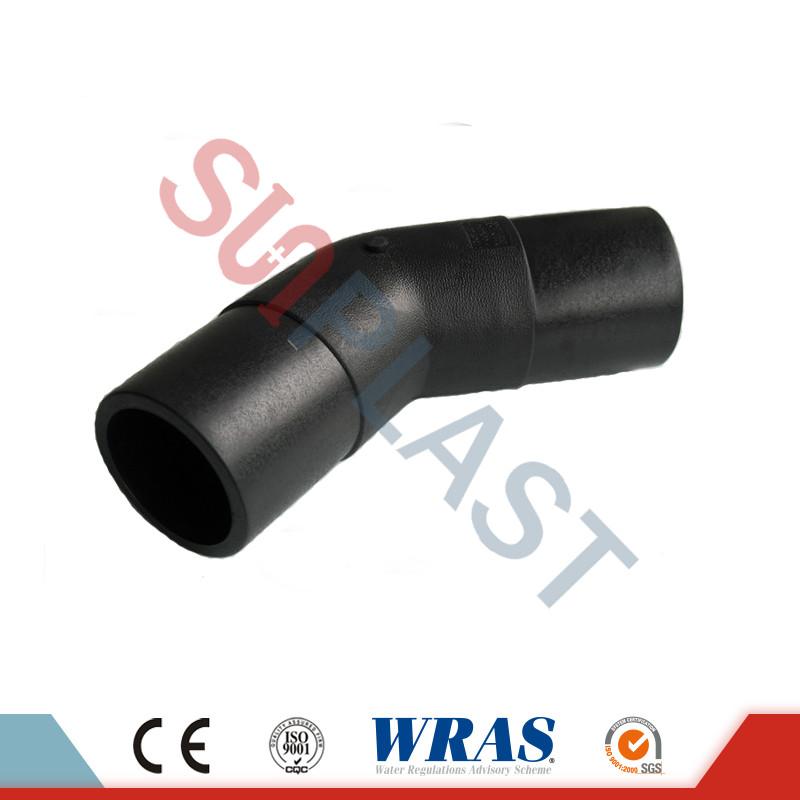The Fusion Symphony: Understanding How Butt Fusion Works and Its Ideal Harmony with HDPE 22.5-Degree Elbows
2024-01-25
Introduction:
In the orchestration of piping systems, the fusion welding process plays a pivotal role in creating strong, reliable joints. Among the various fusion techniques, Butt Fusion stands out as a method particularly well-suited for High-Density Polyethylene (HDPE) pipe fittings, including the intricate 22.5-Degree Elbow. Let's delve into how the butt fusion process works and why it forms a seamless harmony with HDPE materials, especially in the context of 22.5-degree elbows.
How Butt Fusion Works:
1. Preparation of Pipe Ends:
- The butt fusion process begins with the preparation of the pipe ends that are to be joined. The ends are cut square and cleaned to ensure a smooth surface without any contaminants.
2. Heating Phase:
- The prepared ends of the HDPE pipes are then heated simultaneously using specialized butt fusion equipment. This equipment typically includes a heating plate that brings the pipe ends to a specific temperature, allowing them to become molten and pliable.
3. Joining the Pipes:
- Once the pipe ends reach the desired temperature, they are quickly brought together, creating a molten interface. The heated ends are pressed firmly against each other to form a seamless bond. This stage is crucial, as it ensures that the molten HDPE material fuses together, creating a homogenous joint.
4. Cooling and Solidification:
- After the pipes are joined, the molten material undergoes a cooling phase. The cooling process is essential for solidifying the fusion joint and establishing a strong connection between the pipe ends. Proper cooling ensures that the joint attains the necessary structural integrity.
5. Homogenous Fusion:
- The butt fusion process results in a homogenous fusion joint where the molecular structures of the HDPE material align seamlessly. This joint is as strong as the original pipe material, ensuring uniform strength distribution across the connection.
Why Butt Fusion is Ideal for HDPE 22.5-Degree Elbows:
1. Seamless Integration:
- Butt fusion offers a level of seamless integration that is vital for complex HDPE pipe fittings like the 22.5-Degree Elbow. The homogenous fusion joint ensures that the elbow maintains the same structural integrity as the rest of the piping system.
2. Uniform Strength Distribution:
- The gradual bending required in a 22.5-degree elbow demands a joint with uniform strength distribution. Butt fusion creates a connection that distributes forces evenly, preventing stress concentrations and potential points of failure.
3. Compatibility with HDPE Material:
- Butt fusion is specifically designed for HDPE material. The process aligns perfectly with the properties of HDPE, ensuring that the fusion joint retains the material's advantages, including durability, chemical resistance, and flexibility.
4. No Need for Additional Components:
- Butt fusion eliminates the need for additional components such as adhesives, solvents, or mechanical fasteners. This simplicity contributes to the overall efficiency of the joint and is particularly beneficial in the intricate design of HDPE 22.5-Degree Elbows.
5. Leak-Free Performance:
- The seamless fusion joint created by the butt fusion process results in a leak-free connection. This characteristic is crucial for maintaining the integrity of the piping system, especially in applications where leaks could pose significant risks.
Conclusion:
The harmonious dance between the butt fusion process and HDPE 22.5-Degree Elbows creates a symphony of efficiency, reliability, and strength. As the industry seeks solutions that balance performance and durability, the seamless integration achieved through butt fusion showcases its ideal compatibility with HDPE materials. Together, they form a dynamic partnership that ensures the smooth flow of fluids through intricately designed piping systems, setting a standard for excellence in fluid transport technology.



